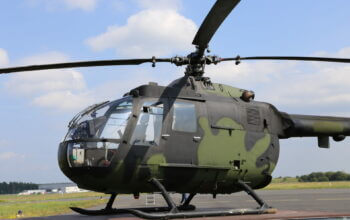Sikorsky S-92 helicopters must now undergo inspections every 10 hours under the terms of a new emergency airworthiness directive (AD) issued by the U.S. Federal Aviation Administration (FAA).

The FAA issued the emergency AD on Jan. 13, calling for immediate inspections of all S-92 tail rotor pitch change shaft (TRPCS) assemblies, followed by repetitive borescope inspections at intervals not to exceed 10 hours time in service.
The emergency AD follows an alert service bulletin (ASB) issued by Sikorsky on Jan. 10, which called for immediate inspections of the S-92’s TRPCS assembly and a review of associated health and usage monitoring system (HUMS) data.
That ASB was prompted by a Dec. 28 incident in which a CHC-operated S-92 lost tail rotor control while landing on an offshore helideck in the North Sea. According to the U.K. Air Accidents Investigation Branch (AAIB), the loss of control likely resulted from a seized bearing in the TRPCS assembly.
The inspections have caused temporary disruptions in the offshore oil-and-gas sector, especially in the North Sea, which is heavily reliant on the S-92 due to the continued grounding of Airbus Helicopters H225 and AS332 L2 Super Pumas by the U.K. and Norway.
While S-92 flight activity dropped precipitously on Jan. 10 following issuance of the ASB, it largely rebounded within 48 hours, according to data provided by Seer Aerospace, a helicopter-focused data analytics and software company that uses ADS-B to track activity levels across the global fleet.

On Jan. 13, Sikorsky reported that “physical inspections of the tail rotor pitch change shaft bearing are well underway with over 250 aircraft inspected,” adding that the company is reviewing HUMS data for those aircraft as well.
According to news reports, the inspections have revealed possible issues with at least four S-92 helicopters in the offshore fleet. Sikorsky stated that “a small number of parts are being returned to Sikorsky for additional evaluation,” noting that “these findings do not constitute failure of the bearing.”
The company added, “We appreciate the FAA’s mandate of the inspection of the S-92 tail rotor pitch change shaft assembly as it supports the continued airworthiness of the S-92 fleet and our top priority, safety.”
The S-92’s TRPCS bearing was the subject of a previous emergency AD, issued by the FAA in November of last year. That AD, however, applied only to TRPCS assemblies with less than 80 hours time in service.
Preliminary investigation of the Dec. 28 CHC incident determined that the bearing failed despite having more than 80 hours time in service, which prompted the FAA to expand its inspection requirements to all S-92 TRPCS assemblies under the latest emergency AD.
According to the AAIB, at this stage of the investigation, it is unclear whether the bearing degradation in the Dec. 28 event is the result of a new root cause. The FAA described its latest emergency AD as an “interim action,” adding that it will consider further rulemaking “if final action is later identified.”









